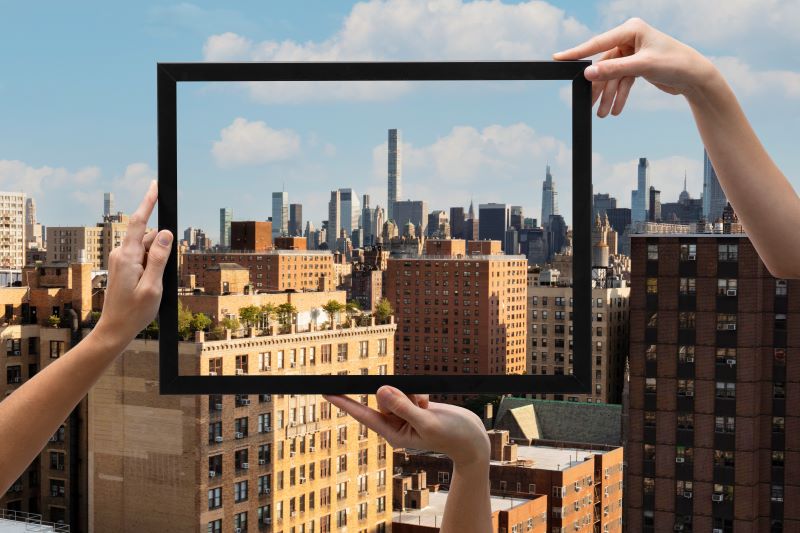Augmented reality technology is revolutionizing many industries, and real estate is no exception to this trend. Thanks to augmented reality, potential buyers can now virtually visualize a property even before visiting it. This technology enables real estate professionals to better sell and rent properties.
How does augmented reality work in real estate?
Augmented reality is a technology that allows virtual elements to be overlaid onto an image of the real world. In the case of real estate, this means that furniture, objects, and even virtual people can be superimposed onto an image of the actual property. Potential buyers can thus visualize the space and imagine what it would look like with their own furniture. They can also get an idea of the dimensions of rooms and storage spaces.
Augmented reality is also used to show potential buyers real estate projects that are under construction. Architects can create 3D models of future buildings and overlay them onto a real-time image of the actual location. Potential buyers can thus see what the finished project would look like before it is even built.
The advantages of augmented reality in real estate
Augmented reality offers numerous advantages to real estate professionals. First and foremost, it allows for a reduction in the number of unnecessary visits. Potential buyers can have a very precise idea of the property before physically visiting it. This reduces costs and saves time for all the actors involved in the real estate transaction.
Secondly, augmented reality can help real estate professionals better sell properties. Potential buyers can visualize themselves in the space, which helps them feel more comfortable with the property. They can also see what the property would look like with their own furniture, which helps them imagine living there.
Finally, augmented reality can be used to show real estate projects that do not yet exist. This can help investors visualize what a project will look like before financing it. It can also help real estate developers sell properties off-plan.
The limitations of augmented reality in real estate
Despite its many advantages, augmented reality still has limitations. First of all, the quality of the visualization depends on the quality of the base image. If the image is blurry or with a poor quality, the virtual overlay will also be of poor quality.
Furthermore, augmented reality requires specific equipment, such as a smartphone or tablet, as well as a fast internet connection. This can be an obstacle for some potential buyers who do not have this equipment or have difficulty using the technology.
Finally, augmented reality does not completely replace an “in real life” visit. Although it allows potential buyers to have a very precise idea of the property, it is important to physically visit the property before buying it. In fact, an in-person visit allows for an idea of the environment, atmosphere, lighting, and surrounding noises, which are difficult to apprehend through a screen.
Conclusion
Augmented reality is a growing technology that is revolutionizing the real estate industry. It allows real estate professionals to better sell and rent properties by offering potential buyers a very precise virtual visualization of the property.
Although augmented reality has its limitations, it is expected to play an increasingly important role in the real estate sector in the future.

